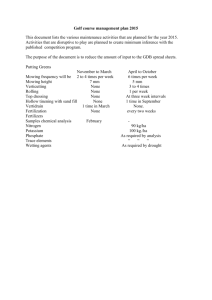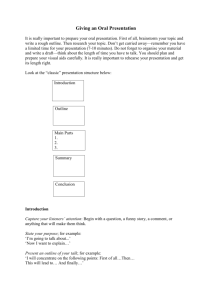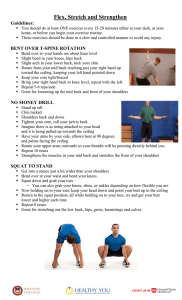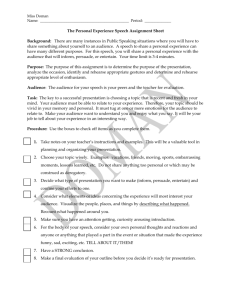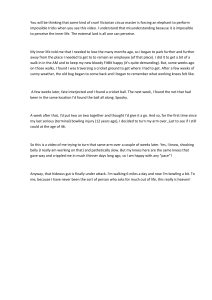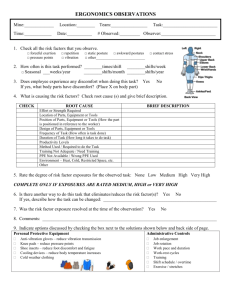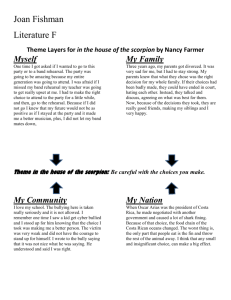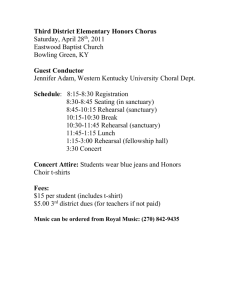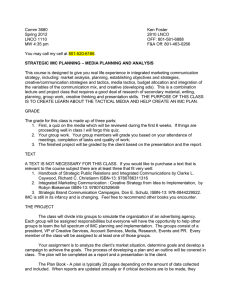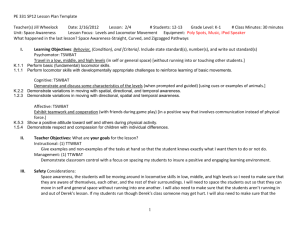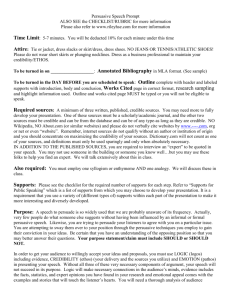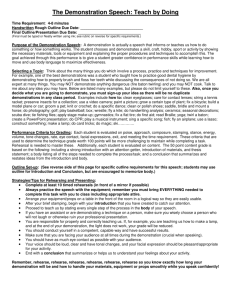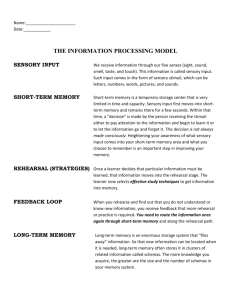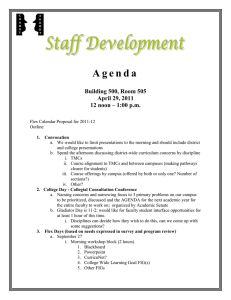Suggestions for Oral Presentations
advertisement
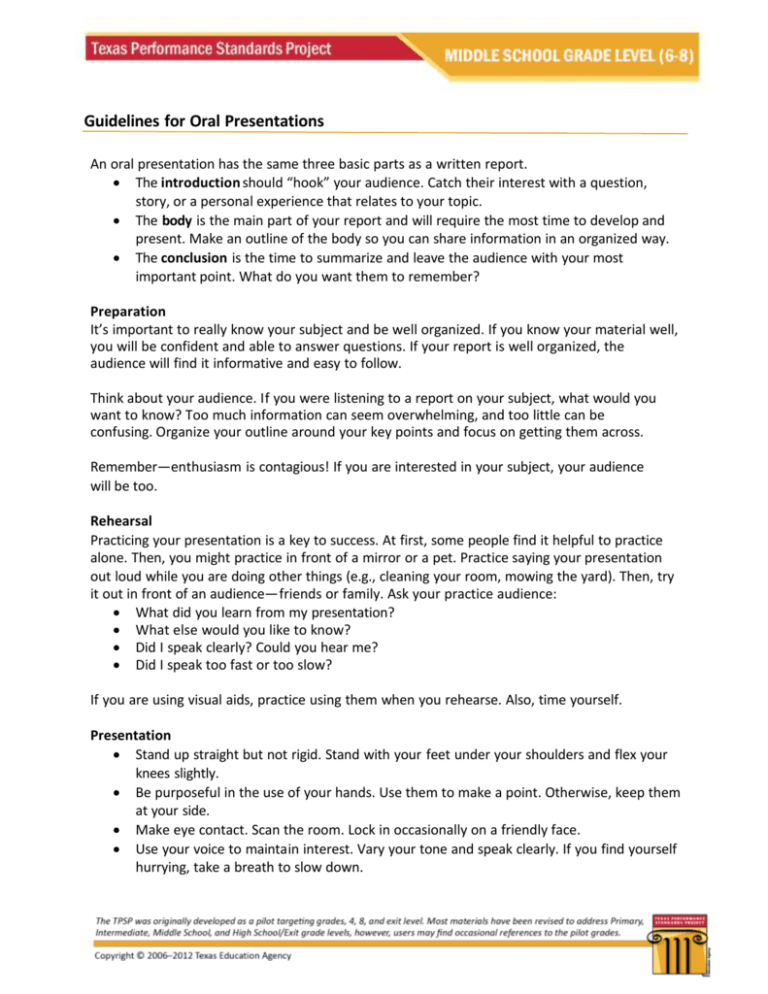
Guidelines for Oral Presentations An oral presentation has the same three basic parts as a written report. The introduction should “hook” your audience. Catch their interest with a question, story, or a personal experience that relates to your topic. The body is the main part of your report and will require the most time to develop and present. Make an outline of the body so you can share information in an organized way. The conclusion is the time to summarize and leave the audience with your most important point. What do you want them to remember? Preparation It’s important to really know your subject and be well organized. If you know your material well, you will be confident and able to answer questions. If your report is well organized, the audience will find it informative and easy to follow. Think about your audience. If you were listening to a report on your subject, what would you want to know? Too much information can seem overwhelming, and too little can be confusing. Organize your outline around your key points and focus on getting them across. Remember—enthusiasm is contagious! If you are interested in your subject, your audience will be too. Rehearsal Practicing your presentation is a key to success. At first, some people find it helpful to practice alone. Then, you might practice in front of a mirror or a pet. Practice saying your presentation out loud while you are doing other things (e.g., cleaning your room, mowing the yard). Then, try it out in front of an audience—friends or family. Ask your practice audience: What did you learn from my presentation? What else would you like to know? Did I speak clearly? Could you hear me? Did I speak too fast or too slow? If you are using visual aids, practice using them when you rehearse. Also, time yourself. Presentation Stand up straight but not rigid. Stand with your feet under your shoulders and flex your knees slightly. Be purposeful in the use of your hands. Use them to make a point. Otherwise, keep them at your side. Make eye contact. Scan the room. Lock in occasionally on a friendly face. Use your voice to maintain interest. Vary your tone and speak clearly. If you find yourself hurrying, take a breath to slow down.
